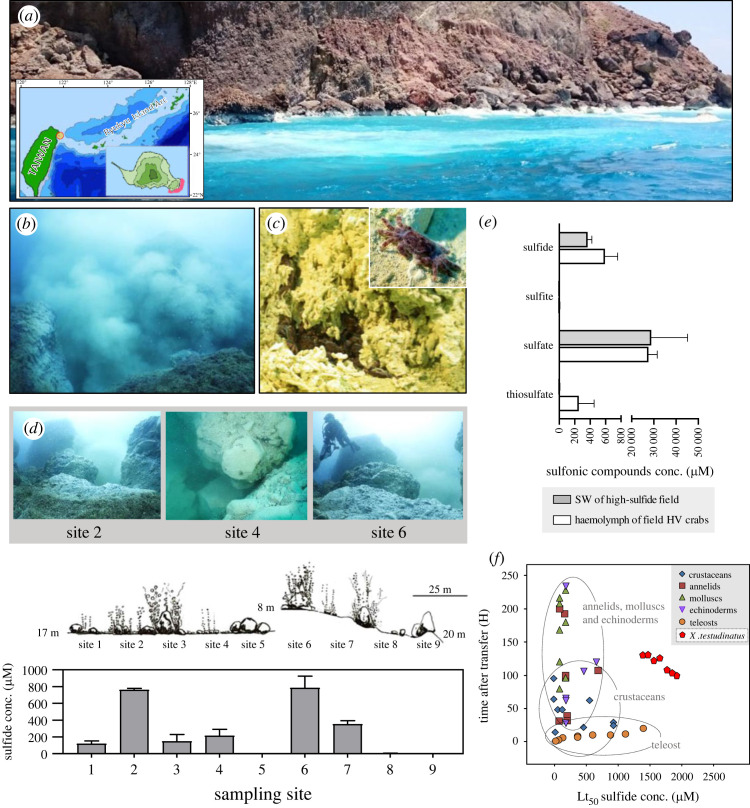Figure 1.
Landscape and physiochemical features of the hydrothermal vent system study area. (a) Picture of the surface seawater around the upper sublittoral hydrothermal vent region of the study site at Kueishan Island (24°50′N, 121°57′E). Kueishan Island lies at the southern rifting end of the Okinawa Trough (inserted panel). A large area of the sea surface has a white appearance because of sulfur particles from the volcanic vent discharge. (b) Underwater photographs of the vent system demonstrate the low abundance of metazoans in these sub-tropical waters. (c) A high density of X. testudinatus crabs which are endemic to sulfide-rich hydrothermal vent systems can be found in sulfide-rich crevices in the immediate vicinity of the vents. Active feeding behaviour can be observed where crabs scavenge sulfide-rich sediments and dead zooplankton that were killed by the toxic vent discharge. (d) sulfide concentrations were measured along two transects in the hydrothermal vent area of Kueishan Island. The schematic illustration shows the seafloor properties at the two sampling transects. The first transect included sampling sites 1–5 and was oriented in the north–south direction at 17 m depth. The second transect included sampling sites 6–9 with an east–west orientation and descended from 8 m to 20 m depth. Values are presented as mean ± s.d. (n = 4). (e) Content of sulfur compounds was measured in the seawater (SW) near Kueishan island (open bars) and the haemolymph of the native X. testudinatus (filled bars). Values represent the means ± s.d. (n = 3–7). (f) Sulfide tolerance as a function of exposure time of X. testudinatus (determined in the present study) compared to other marine species.

